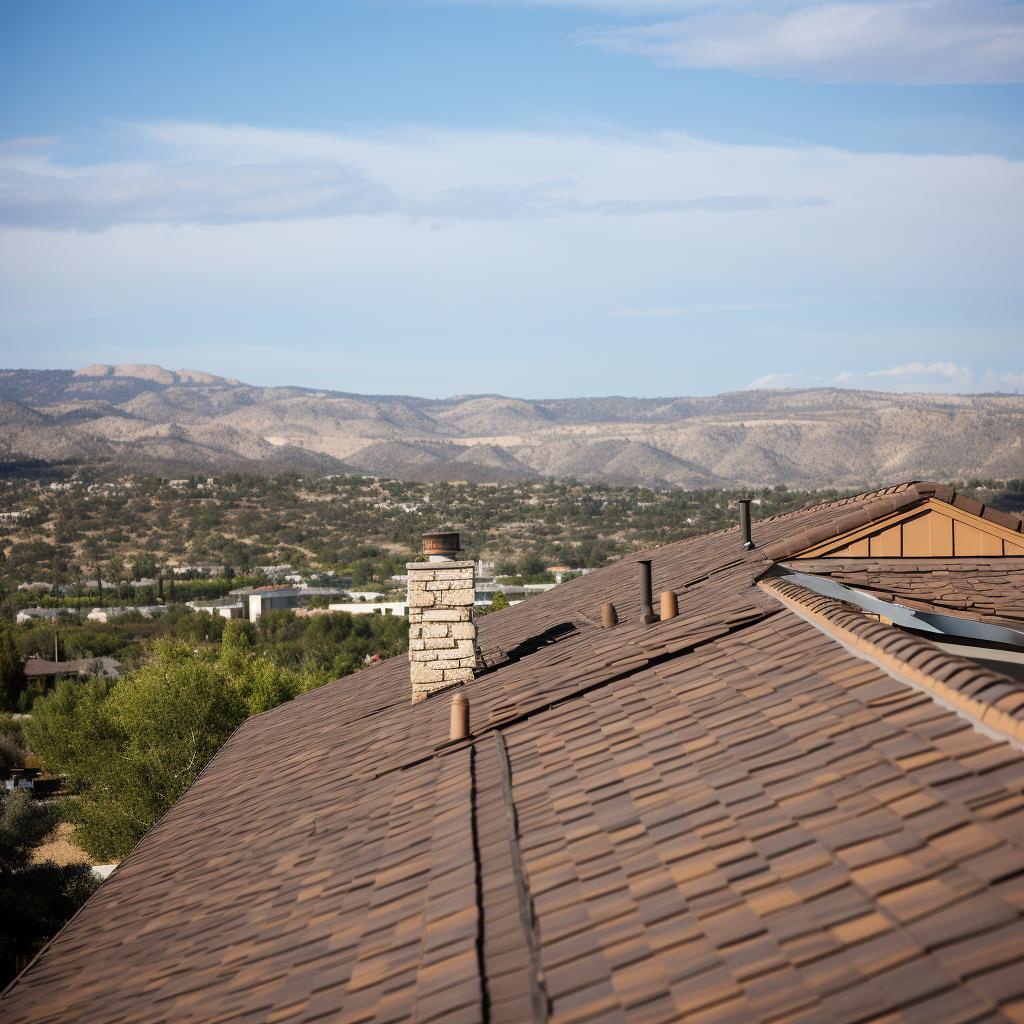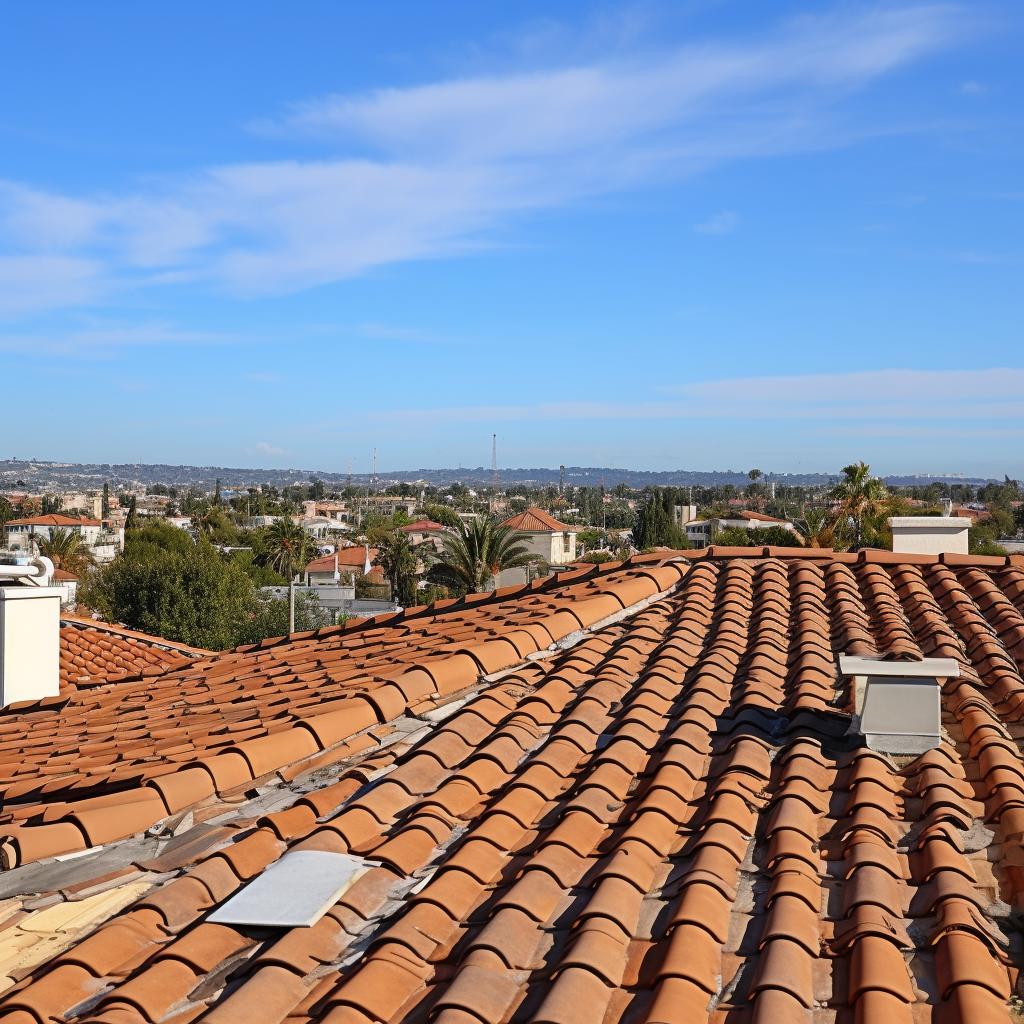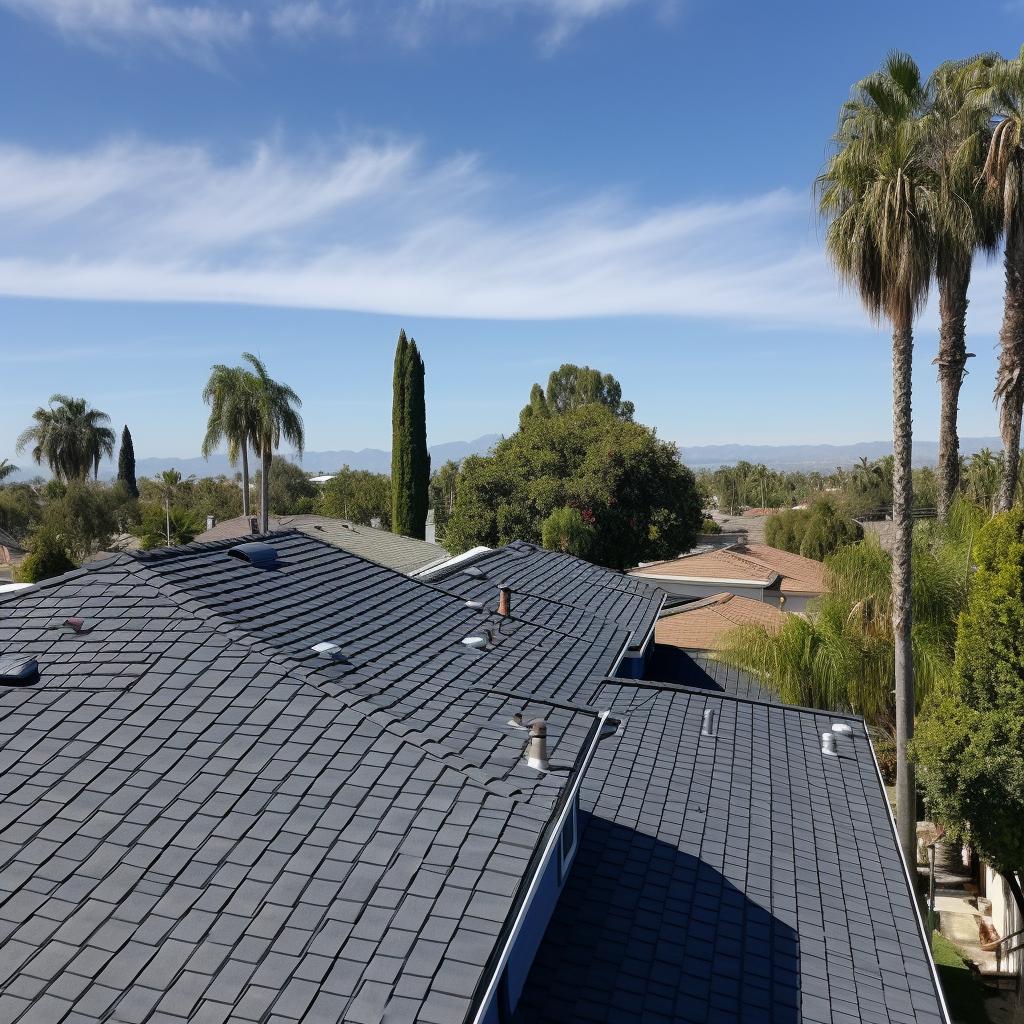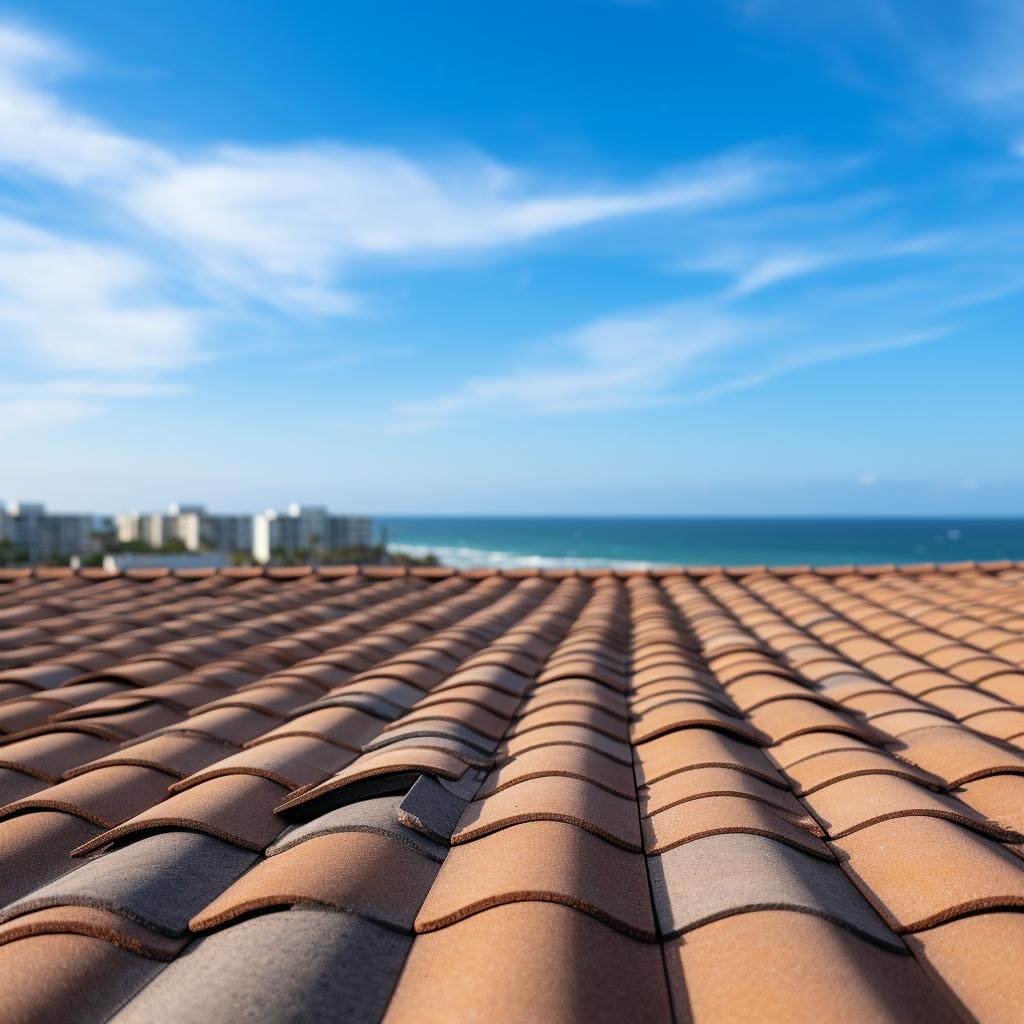The roof of a house is more than just a structural feature-it is a fundamental component that shields us from the elements and provides safety and comfort. As anyone living in Ontario can attest, with the region’s volatile weather patterns, ensuring that one’s roof can withstand the test of time is not just desirable, it is imperative.
Enter the realm of weather-proof roofing Ontario, a concept recently thrust into the spotlight due to an extraordinary archaeological discovery.
Nestled amongst these modern concerns lies an echo from the past-a set of ancient construction secrets ready to redefine contemporary building practices. It’s an incredible thought: knowledge from civilizations long gone holding the key to extending our roofs’ lifespans by decades. This fact emphasizes how crucial a durable roof truly is, not only for aesthetic or cultural continuity but for practical longevity that resists unpredictable climate challenges.
In this article, we tease apart these revelations and lay out how ancient wisdom regarding construction can harmoniously intersect with modern methods, specifically focusing on weather-proofing as practiced in Ontario. By weaving enduring old-world techniques into present day architectural designs and materials, homeowners have a potent opportunity to create homes that are not only structurally sound but also imbued with time-tested resilience-a design philosophy worth its weight in gold amidst shifting seasons and relentless weather events.
The Significance of Roof Longevity
The rooftop of a home is more than just an aesthetic feature; it’s a shield against the elements, and its longevity directly correlates to the safety and comfort of the inhabitants beneath it. That’s why the discovery of ancient construction secrets is causing such excitement among modern homeowners.
The tease of knowledge that could extend the lifespan of your roof by decades holds immense value in regions with harsh weather patterns, like Ontario. While new builds are continually being equipped with innovative technology, older homes typically require upgrades to enhance their durability, especially when adopting advancements in weather-proof roofing for Ontario climates.
Longevity in roofing is not just a matter of personal convenience. It poses significant financial benefits to householders as well as broader environmental implications. A durable roof means less frequent replacements, which translates into cost savings and fewer resources consumed over time.
Considering Ontario’s climate ranges from humid summers to freezing winters, choosing materials and methods that withstand these fluctuations is crucial. Weather conditions play a pivotal role in determining what constitutes a reliable roofing system. The implementation of weather-proof roofing in Ontario is paramount due to the regular battering roofs take during conditions like ice storms, heavy snowfall, and blistering sun exposure.
| Weather Condition | Common Roof Issues |
|---|---|
| Heavy Snowfall | Structural stress, ice damming |
| Intense Sunlight | Shingle deterioration, UV damage |
| High Winds | Shingle loss, structural vulnerability |
| Rain/Moisture Exposure | Mold growth, rotting wood underlayment |
It is undeniable that investing in proven strategies for enhancing roof lifespan-like those inspired by ancient wisdom-is both practical and economically wise for today’s homeowner. As one delves deeper into this fascinating mix of history-meets-modernity approach on roofing systems for regions such as Ontario where extreme weather is commonplace-it becomes clear why longevity isn’t just desirable; it’s essential.
A Dive Into the Past
Tracing the Roots: Discovery of Time-Tested Building Know-How
The quest to understand how to extend the lifespan of structures brought experts back to the remnants of ancient civilizations. The study of archeological sites across various continents revealed that some roofs and buildings have stood resiliently against the tests of time, weather, and human conflict.
Unearthing these sites was just the beginning-it was the in-depth analysis of their composition that provided a wealth of knowledge. Techniques once lost to history are now resurfacing as potential solutions for enhancing modern construction practices by marrying them with new methodologies like weather-proof roofing Ontario.
Ancient Durability Meets Modern Reconstruction
Through meticulous examination of ancient ruins, it became evident that these edifices often outshone newer constructions in terms of durability. This raised important questions: What materials did our ancestors employ that we’ve forsaken? And what methods contributed to such lasting power?
As we peeled back layers of history, evidence showcased materials mixed with organic compounds and minerals that were not only readily available but also sustainable and robust-the true backbone of these enduring constructs. Critically, these historical building blocks were leveraged within architectural designs brilliantly adapted to local climates and landscapes-a philosophy potentially influential for modern concepts like weather-proof roofing Ontario.
Relating Past Practices to Contemporary Needs
While some might consider ancient projects primitive compared to today’s skyscrapers and sprawling urban developments, there is much wisdom in their simplicity and adaptation. For instance, certain ancient populations oriented their buildings strategically concerning wind patterns and sun exposure-early iterations of what we’d now term passive solar design or natural ventilation strategies.
These civilizations’ intuitive understanding illustrates how infrastructure can work symbiotically with the environment rather than against it. Translating this reverence for natural forces into current building practices could mean significant gains in roof longevity-particularly pertinent when constructing weather-proof roofing Ontario, an area known for its challenging climate conditions that see intense winters alongside hot summers.
By borrowing insights from our ancestors’ construction playbook while implementing cutting-edge technologies, architects and builders could dramatically improve the resilience and sustainability of modern housing-one rooftop at a time.
The Ancient Secret Revealed
Rediscovering the Durability of Ancient Building Materials
The mystery behind ancient structures’ endurance lies heavily in the materials they were made with. Our ancestors utilized resources that were accessible, yet robust. These materials included lime and volcanic ash for mortar, which have shown exceptional resistance to the degradation over millennia.

The integrity of these materials under various environmental conditions is one attribute that modern construction can draw inspiration from. For instance, when considering weather-proof roofing in Ontario, materials with similar enduring qualities are sought after to withstand the harsh winters and humid summers.
Another notable material is natural stone, used extensively in ancient construction due to its availability and durability. Stone structures possess a natural resilience against many forms of wear and tear-qualities desirable in contemporary roofing materials. By analysing these age-old building blocks, scientists and architects have begun to understand how selecting the right materials plays a pivotal role in extending a roof’s lifespan by not just years, but possibly decades.
Innovative Architectural Techniques From Antiquity
In addition to robust materials, our forebears employed innovative architectural techniques that contributed significantly to their buildings’ longevity. Interlocking stones without the use of mortar is one such example observed in numerous ancient edifices-a method that provided remarkable stability and strength. These practices demonstrate a profound understanding of balance and weight distribution, ensuring structural integrity even under extreme conditions.
Modern-day roofing can emulate these principles through design strategies that minimize pressure points and evenly distribute weight across the roof’s surface-critical factors for roofing in areas prone to heavy snowfall or strong winds. Understanding load distribution methods from antiquity provides valuable insights into creating roofing systems capable of enduring severe weather patterns characteristic of Ontario’s climate.
Principles Behind Age-Old Construction Tactics
Examining ancient construction wisdom further uncovers foundational principles linked to durability. These include concepts like redundancy-the idea that if one part fails, others can take over its function-and scalability; ensuring structures can bear additional loads as needed without compromising safety or longevity. The use of graded aggregates within concrete mixtures exemplifies ancient builders’ mastery over scalable design; varying aggregate sizes led to incredibly stable foundations capable of withstanding immense stress over time.
Translating these methodologies into modern contexts suggests more strategic layering within roofing systems and using composites designed to respond adaptively to stressors such as temperature fluctuations or moisture penetration-two common challenges faced by weather-proof roofing in Ontario. As homeowners today seek more durable solutions for their properties, it becomes increasingly evident how much there is still to learn from age-old construction secrets that once ruled our landscapes for centuries.
Modern Adaptation
Incorporating ancient construction secrets into modern day building practices may just be the key to more durable and resilient roofs. As we delve into this re-discovery, considering its application within a contemporary context, particularly for weather-proof roofing in Ontario, is essential.
Our Canadian climate poses unique challenges that necessitate specialized solutions to protect our homes from harsh weather conditions. By examining how these time-tested methods can be adapted, homeowners could significantly enhance the lifespan and robustness of their roofs.
Adapting ancient wisdom for today’s buildings begins with understanding the materials and techniques that have enabled structures from yesteryears to withstand the test of time. These principles include using natural materials with innate durability, designing for effective water drainage, and accounting for thermal movement. To apply these concepts to weather-proof roofing Ontario-style might involve several approaches:
- Employing thicker or multiple layers of underlayment offers enhanced protection against water seepage.
- Choosing roofing materials like slate or terracotta that are known for their longevity as well as their resistance to fire and insects.
- Incorporating improved ventilation systems in roof design can help reduce moisture accumulation and regulate temperature extremes.
Moreover, some of these ancient techniques align seamlessly with current trends in green building practices. For instance, installing cool roofs coated with highly reflective paints mirrors the age-old custom of whitewashing structures to deflect sunlight and maintain cooler interior temperatures during hot seasons. This not only contributes to a longer roof life but also promotes energy efficiency.
Recognizing which historical practices align with cutting-edge materials is pivotal when searching for appropriate solutions; it’s about merging traditional durability with contemporary style and practicality-a collaboration made for Canada’s multifarious climate. By tailoring these age-old concepts within our architectural designs today, a new calibre of enduring excellence emerges.
Technological Advancements in Roofing
Advancements in roofing technology continue to propel the industry towards materials and methods that are not just innovative but also hail from principles similar to those found in ancient construction. The key to extending the lifespan of a roof has always been in enhancing its resilience, particularly against environmental factors.
In Ontario, where weather can range from extreme cold and heavy snowfall in the winter to scorching heat waves in the summer, modern technological advancements are crucial for developing weather-proof roofing Ontario solutions that stand the test of time much like their ancient counterparts.
One such technological achievement is thermoplastic polyolefin (TPO) roofing systems. Recognized for their superior durability and heat-reflective properties, TPO roofs are a modern solution inspired by the reflective qualities seen in ancient buildings.
These white-coated roofs not only endure harsh sun exposure reducing cooling costs but are also resistant to ultraviolet rays, ozone, and chemical exposure. Similarly, advances in insulation materials have led to higher R-value products – indicating greater resistance to heat flow – which contributes to increased energy efficiency and longevity of roofing systems.

Another example is the use of green roofs or living roofs which draws on ancient practices of using earthen materials as natural insulators and protectors against elements. Today’s green roofs provide several benefits including reducing heating and cooling costs, mitigating stormwater runoff, prolonging roof life by blocking UV rays and extreme temperatures from damaging the roof membrane directly.
| Ancient Technique | Modern Equivalent |
|---|---|
| Reflective surfaces (e.g. marble) used for cool building interiors. | TPO Roofing Systems with high-reflectivity ratings. |
| Earthen rooftops that blend with surroundings for insulation. | Green Roofs with vegetation layers that provide natural insulation. |
Innovation within roofing technology does not end at materials alone; it also involves improvements in installation procedures and predictive maintenance strategies facilitated by smart technology. Drones equipped with infrared cameras now conduct thermal inspections to identify water leakages and faulty insulations without risk or damage to existing structures.
Artificial intelligence algorithms predict future weak spots based on prevailing weather patterns enabling preemptive repairs that ensure continued performance of the roofing system over long periods – an attribute highly valued both in olden times as well as today’s fast-paced world where sustainability increasingly goes hand-in-hand with advanced technological solutions.
Practical Tips to Extend Your Roof Lifespan
When it comes to guarding your house against nature’s elements, the sturdiness and endurance of your roof are paramount. While the ancient construction secrets offer profound insights into resilient building methods, there are practical steps you can take today to ensure that your roof withstands time and weather just as those ancient structures have. Implementing these straightforward yet effective strategies could add decades to your roof’s life.
Maintenance: The Cornerstone of Durability
Regular maintenance stands as the cornerstone of extending the life expectancy of any roofing system. Prevention is always better than costly repairs, and this is especially true in areas with variable weather like Ontario. A routine inspection can reveal minor issues before they escalate into major problems, such as replacing a few shingles rather than needing an entirely new roof prematurely.
Keeping gutters clean and ensuring downspouts are directing water away from the home are critical actions in preventing water damage that can lead to structural weakness. It’s also important to remove debris accumulation after storms or seasonal changes, as excessive weight on a roof can lead to undue strain and accelerated wear.
Material Choice: Building for Endurance
Selecting appropriate materials capable of enduring severe weather conditions is crucial for constructing weather-proof roofing in Ontario. With technology constantly evolving, it’s essential to stay informed about which materials offer superior longevity and protectiveness under local environmental stresses such as heavy snowloads, hailstorms or high winds.
Some modern materials have been engineered specifically for enhanced durability while still drawing inspiration from the resilience of ancient construction techniques. For instance, modern metal roofing options mimic some qualities of old-world roofs through their ability to resist fire while providing substantial longevity.
Professional Inspection: Getting Expert Insights
Insight from professionals should not be underestimated when extending a roof’s lifespan. Roofing specialists have the keen eye needed to spot potential weak points or deterioration earlier than an untrained observer might manage.
Engaging roofing contractors who specialize in both installing and maintaining weather-proof roofing systems ensures that expert knowledge informs every aspect of a roof’s upkeep plan – from suggesting suitable materials tailored to Ontario’s climatic needs, to providing guidance on how often inspections should occur based on specific environmental conditions.
Taking heed of these tips aligns with both past wisdom and present technologies in addressing roofing durability challenges head-on; leading towards an era where roofs are secure enough to last for generations without necessitating frequent replacements or extensive renovation efforts – much like the artifacts uncovered from our ancient predecessors who seemed keenly aware that well-executed construction would indeed stand the test of time.
Case Studies
In the efforts to combine historical durability with contemporary needs, several case studies eloquently illustrate how ancient construction techniques have been seamlessly integrated into modern roofing projects. These success stories serve as a testament to the longevity that traditional methods can bring to current structures when applied thoughtfully.
One remarkable instance features a heritage building in Ontario where renovators were faced with the challenge of preserving its historical aesthetic while enhancing roof longevity. The solution came through the implementation of ancient Roman tiling techniques, known for their exceptional endurance over centuries.
Modern materials such as weather-resistant composites were used to craft tiles that mimic the design and function of their ancient counterparts. These tiles were then arranged in an overlapping pattern that not only reinforced the structure but also offered excellent repelling of Ontario’s challenging weather conditions, ensuring an effective weather-proof roofing Ontario application.
Another example can be found in a residential home where homeowners decided to reinforce their roof using principles derived from ancient Chinese architecture. Here, builders employed meticulous joinery without nails or adhesives-a signature of Chinese craftsmanship.
This technique allowed for natural expansion and contraction with temperature fluctuations, reducing stress on building materials. Additionally, homeowners chose bamboo – a durable and sustainable material known for its resilience and flexibility – which was treated with eco-friendly preservatives to further extend its life against harsh climates.
- Toronto Historical Building: Integration of Roman Tiling with Composite Materials
- Ontario Residential Home: Application of Ancient Chinese Joinery Techniques
- Eco-friendly Bamboo Reinforcement: Weather-Proofing in Action
These examples pave the path for architects and builders looking to merge past wisdom with future-facing technologies. By valuing both tradition and innovation, these roofing projects not only honor historical expertise but also align well with today’s sustainability movement-forever changing our approach to building practices aimed at enduring time’s tests.

The Future of Roofing
As we venture into a future where the importance of sustainable living and eco-friendly practices is paramount, the roofing industry is not falling behind. Ancient construction methods are making a comeback, fueling a revolution in how roofs are thought of and built.
The notion of integrating these timeless techniques with contemporary knowledge is more than a trend; it’s becoming a requirement as homeowners and builders seek to create structures that stand the test of time without compromising on environmental responsibility.
The union of ancient wisdom with modern sustainability trends can be seen through several key practices already beginning to take shape in the industry. First and foremost, there is an increasing use of recycled and eco-friendly materials in roofing that both reduces waste and increases energy efficiency. Onto this, add the practice of green roofing, which includes vegetative layers that provide insulation, absorb rainwater, and foster biodiversity:
- Installing solar panels or integrating photovoltaic materials to harness solar energy,
- Using recycled shingles made from rubber or plastic that mimic traditional materials,
- Adopting cool roofing technology to reflect more sunlight and absorb less heat.
The integration of such technologies not only mirrors the enduring nature of ancient designs but paves the way for roofs that contribute positively to their surroundings. Moreover, building codes and standards are evolving to support these sustainable practices, influencing manufacturers to innovate further in creating products conducive for weather-proof roofing Ontario residents can rely on for decades.
This proactive approach towards environmentally conscious construction ensures that new developments will not only preserve our planet’s resources but also offer homes with significantly prolonged lifespans.
Looking ahead, it’s clear that architects and builders will continue drawing inspiration from time-honored construction secrets while leveraging advancements in science and sustainability. Designs will become more adaptive to changing climates incorporating features like rainwater harvesting systems or automatic responsive shading systems to manage heat gain effectively.
Meanwhile, advancements in materials science may soon give rise to even more durable composites that stand up against extreme weather conditions while reducing carbon footprints – giving true substance to the concept of “building for tomorrow.” These practices echo the resilience found within ancient constructions but with an added layer: ensuring the well-being of future generations by thriving responsibly today.
Conclusion
Understanding the longevity of a roof is not merely handy knowledge but a fundamental aspect of effective home maintenance, especially in areas like Ontario where the weather can be particularly harsh on housing exteriors. A durable roof can save homeowners thousands of dollars over time by delaying the need for replacements and reducing repair costs. Given its significance, it’s essential to discuss why extending the lifespan of a roof matters both practically and financially.
A roof does more than just cover a house; it protects everything and everyone inside from the elements. In places with diverse climates such as Ontario, where seasons can bring severe thunderstorms, heavy snowfall, freezing rain, and high winds, roofing materials are put to the test.
Ensuring that a roof can withstand these conditions through ‘weather-proof roofing Ontario’ methods is not only about securing a home against current climate patterns but also preparing it for more extreme weather events in the future.
The practical implications here are clear: A longer-lasting roof means fewer disruptions from having to conduct repairs and renovations. Financially speaking, investing in quality materials and installation may have higher upfront costs but proves economical in the long run due to reduced maintenance needs. Enhanced energy efficiency is another benefit of well-maintained modern roofs as they can provide better insulation than older or degraded ones-resulting in lower utility bills.
| Benefit | Impact |
|---|---|
| Durability Against Weather | Reduces frequency of repairs needed due to damage from extreme weather events |
| Financial Savings | Saves money over time with fewer replacements and lowered repair costs |
| Energy Efficiency | Lowers ongoing utility costs due to improved insulation qualities |
It’s evident that having a robust roofing system cannot be underrated, not just for personal comfort but also as an investment into a property’s overall value and integrity. The appeal of discovering ancient construction secrets lies predominantly in their potential applications today-especially those adaptable principles that ensure structures withstand various pressures over centuries.
Integrating this timeless wisdom with contemporary ‘weather-proof roofing Ontario’-style means potentially achieving unparalleled durability that ancient architects would admire-even by today’s complex architectural standards.
Call to Action
As we wrap up our exploration of ancient construction secrets and their implications for modern-day roofing, it’s essential to underline the actionable steps that homeowners and construction professionals can undertake. First and foremost, consider the longevity of your building practices with a new appreciation for durability and learn from the wisdom of our ancestors-an approach that could significantly extend the lifespan of roofs across Ontario and beyond.
For those in regions like Ontario, where weather conditions can test the mettle of any structure, embracing weather-proof roofing solutions is imperative. The integration of ancient methods with cutting-edge technology offers a formidable defense against the elements. Whether you’re constructing a new home or looking to retrofit your current one, it’s time to consult with specialists who understand how to meld these time-tested techniques with contemporary materials for an investment that stands test of time.
The call extends beyond mere contemplation; action is necessary to reap these long-lasting benefits. Take this moment as an opportunity to engage with expert consultants on implementing weather-proof roofing in Ontario or incorporating sustainable practices into your future projects.
For those interested in diving deeper into this profound confluence of past and present, further reading materials and consultation services await your inquiry. Your roof is not just another aspect of your home-it’s a legacy that echoes both antiquity’s mastery and today’s innovation.


